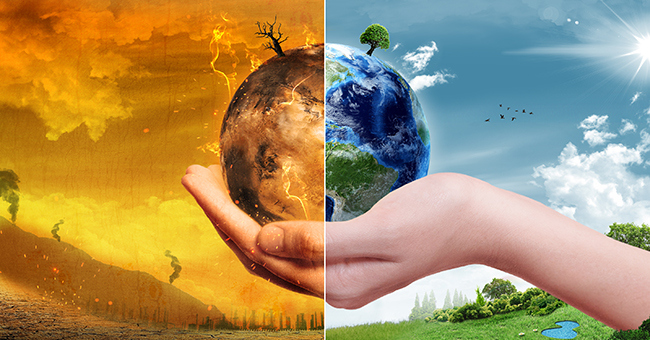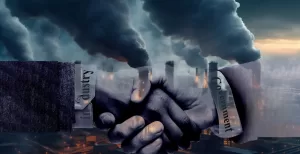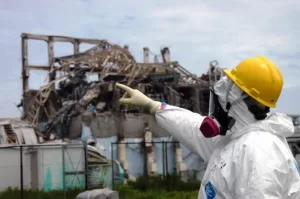To start with a few words about myself, I am a conservationist serving the rainforests of the Western Ghats in India. It has been my lifelong inquiry to look at how a biome can recover from assault—from colonial-neocolonial-capitalistic-civilizational assault. I know, and the biome knows, that it can heal from most travesties and injuries, and that it will do its utmost to replenish itself and the planet. I have faith that this is true for humans and also the creatures portrayed in Eileen’s Crist’s essay, “Solidarity with Animals” (https://greattransition.org).
My vocation and imperative is to protect endangered species, restore rainforest habitat, and educate youth. I am not alone. There are many women in this place. Together with the men who also live and work here, we have an intimate knowledge of the plants and animals who create this biome, who are all sovereign beings in their own right. Together we work on a collective ecology, acknowledging our inseparableness from each other in the web of life. We create cultures, biomes, and ecospheres. All these are being exterminated by the toxic forces of technologized-capitalistic patriarchy.
Without detracting from the horror of animal gulags, I urge us to remember that humans too are slaves to modern capital’s domination imperative. So, too, is the great planet with its winds and lands and waters and icy expanses and biodiverse biomes. So, too, are the forests of my region with their elephants, butterflies, orchids, ferns, and towering trees.
Modern capital needs us (creatures) alive, and it needs us dead for its conquest. It is a real question how liberation will come for anybody. With a violation imperative unique in the entire life of the cosmos, it needs enslaved trees, dead trees, living trees, and feral trees (ecosystem services of forests). It needs enslaved, dead, living, and feral water (for irrigation, tidal power, and hydropower). It needs enslaved, dead, living, and feral wind (for air-conditioning, ventilators, turbines, and climate control). It needs enslaved, dead, living, and feral plants and animals (for food and medicines and now for climate-saving biodiversity). It needs enslaved, dead, living, and feral viruses (for evolution and now for vaccines and the great global reset). It needs enslaved, dead, living, and feral humans (for research, trade, war, terrorism, and slavery). And like all the above, it needs an enslaved, dead, living, and feral planet too (for extra-terrestrial research and exploration of the moon, other planets, the solar system, the cosmos, and space).
The urgency to address the relation between the militarized-capitalist-supremacist mindset and the living body of the earth looms larger all the time. The latter includes you and me, our beloved human families, friends, communities, and peoples, and also our non-human kith and kin. Including, and especially, the animals exploited for supremacist projects, the subjects of Eileen Crist’s essay.
On one side of a virtual line, to my west, a marvelous old growth forest billows mightily in the winter wind. There, wild animals run free. They are fecund, sinewy, and strong. Their lives interweave to make mind-boggling diversity. Along with plants and fungi, the microbes, winds and waters, they create the forest. When they cross over the virtual line, as they often do to the “human” side, they are driven back; they are perceived as destructive as they raid the territories of the settler peoples, the new landed gentry, and the corporatized plantations. Hunting is prohibited these days, so their numbers are on the rise. But so is the ire of humans whose dependence on the global market for selling cash crops (banana, coffee, pepper, avocado, rubber, tea, bitter gourd, pigs, cattle, chickens, labor, and gentrified views) pits them against the feral forces of the forest. Simultaneously, wild habitat is decreasing through fragmentation, fencing, and control. More animals in less forest is a kind of corralling. Drawdown and overshoot, or cross-border terrorism, are inevitable, it seems.
❈ ❈
On the human-dominated side, animals live in pens, cages, or stalls. If outdoors, they are usually tethered. They are protected from predators, and fattened by imported feed, and subjected to antibiotics, vaccines, and artificial insemination. They are mostly destined for butchery. There is little free grazing (but there are no large factory farms either). Feral dogs and cats live their feral lives: some are fed, others are left to scavenge, occasionally one falls to poisoning.
Not far from my dwelling, I can hear wild boars grunting at night, and when I walk past our borders, I can hear the snorts of penned pigs in nearby farms. The modern existential conundrum revolves around the question of freedom, one that especially rises in encounters with both wild and caged creatures. Elephants, bison, deer, otters, monkeys, jungle fowl, snakes in their assigned “wild” homes on the forest side, and cows, water buffalo, goats, chickens, dogs, and cats on the farm side, each making incursions to the other side. Being alive today is a negotiation of strange contradictory forces. Slaughter is allowed, but hunting is not. Wild boar can’t be killed by hunter gatherers with their bows and arrows, but tame pigs can be butchered by steel knives. Foraging from the forest is a punishable crime, while huge land areas can be converted to farms and resorts. Farmers can grow subsidized crops and tourists can be taken on wild foraging sprees for a price, while the free ones, who never have to pay for housing or food, are subject to land use regulations and global funding; the natural world is after all a land use category.
❈ ❈
On the forest side, trees brimming with epiphytes soar as they have done for a hundred million years. Their ancient range lands have also been diminished by 90%. The word holocaust is appropriate for this degree of destruction. Meanwhile, on the other side, trees are not so tall; they are farmed, or co-opted, battered, suppressed, and sprayed with toxic chemicals for the sake of the world market. Torture, burning, and slavery of a botanical kind.
My adivasi friends (first peoples) can hear the thoughts of trees. They have a rich, storied narrative imbued with climbers, creepers, medicinal herbs, and different trees. They also have fantastic tales of animals. They have forested ballads that run for days. They worship stones. They live or act in solidarity with all beings. Well-being is of the whole, and suffering is of the whole. They show me that my own frames of referencing, and thus my politics, may add to the violence already borne by the living world. Over time, I make my mental boxes more porous. My ecology mirrors my learning. Animals and plants, and trees, rain, rivers, and rocks, all in wild interbeing, living in communion, as community.
It is extraordinary that my friends are denied free access to their previous range lands, the forest that has been their home for thousands of years, perhaps tens of thousands of years. They are the forest. Now many of them work as coolies in plantations, and they eat white rice from government distribution agencies, instead of wild caught creatures, and dozens of different forest plants. They, of course, are enslaved, though the economy likes to call it progress and development.
❈ ❈
I, too, had a different relationship with the rest of the living world. I am now a full-fledged conservationist. I work more with lines, rules, policies, grants, papers, and ideas, with money trails subject to global deals, than the actual land. I engage more with abstractions than the free walking explorations I did as a young wildlifer when I first came here thirty years ago. The experience of being alive in the modern world is another way of saying slavery, or being complicit in enabling slavery.
❈ ❈
I continue, however, to listen to the ecological thoughts of the forest. I know it can return, that it is trying all the time. I know that tigers and elephants can live peacefully with humans. I know that a generation ago, in this area, humans had a different relationship with their ancient forest home and other creatures living here. I know a different way of being is certainly possible, even if it is carried on the wings of memory.
The experience of being alive in a forest is community.
(Suprabha Seshan is custodian of the Gurukula Botanial Sanctuary, essayist, and ecological activist. Courtesy: Countercurrents.org.)




